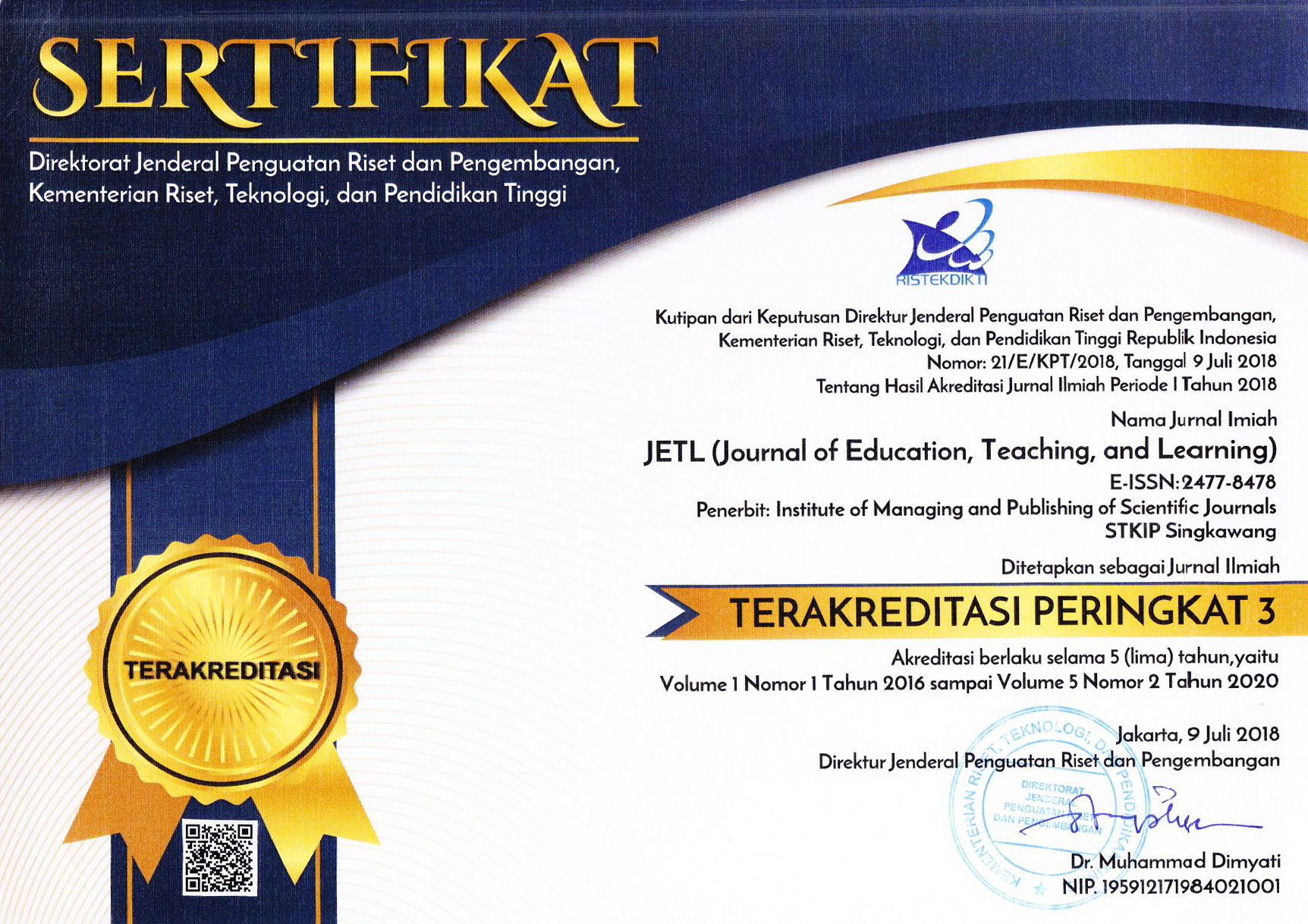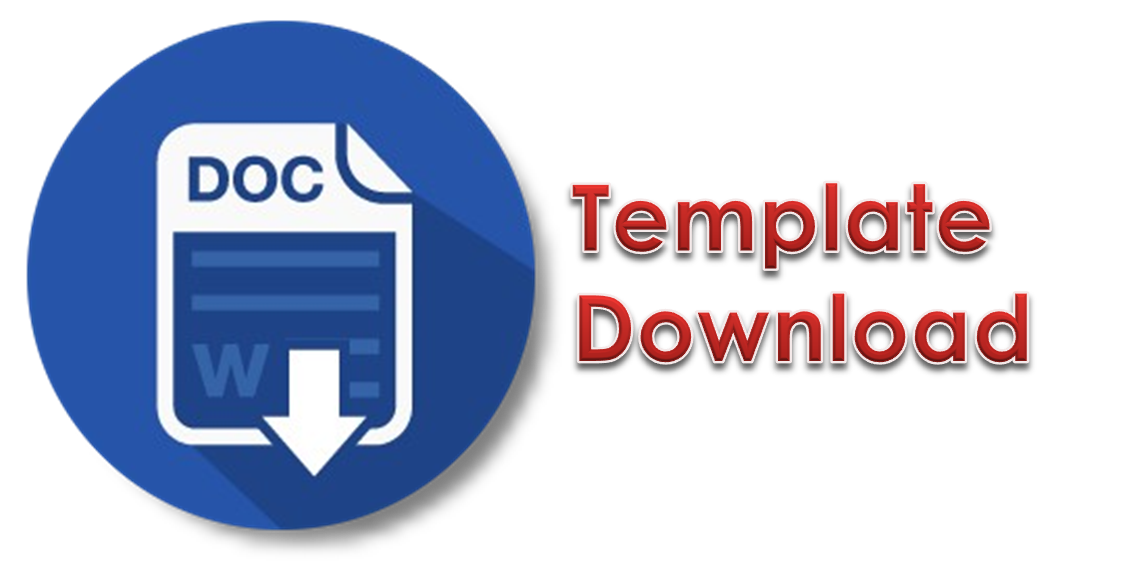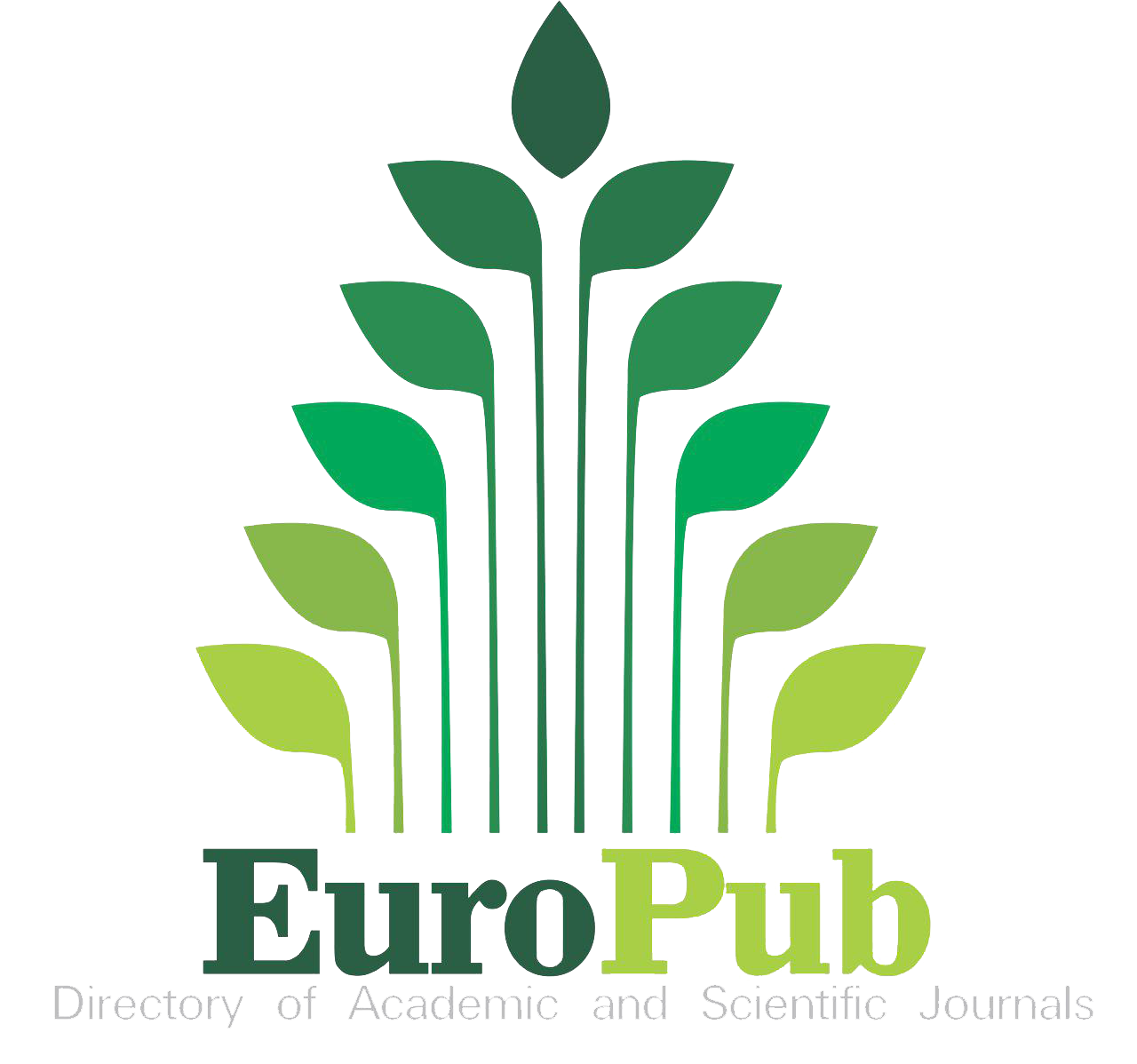Development of Muara Takus Temple Augmented Reality as a History Learning Media to Improve Reading Skills in Historical Sources
Abstract
Keywords
Full Text:
PDFReferences
Abbas, E. W., Syaharuddin, S., Mutiani, M., Susanto, H., & Jumriani, J. (2022). Strengthening Historical Thinking Skills Through Transcript Based Lesson Analyses Model in the Lesson of History. ISTORIA Jurnal Pendidikan Dan Ilmu Sejarah, 18(1), 1–11. https://doi.org/10.21831/istoria.v18i1.41691
Alzahrani, N. M. (2020). Augmented reality: A systematic review of its benefits and challenges in e-learning contexts. Applied Sciences (Switzerland), 10(16). https://doi.org/10.3390/app10165660
Bagnall, R. S. (2020). Reading Papyri, Writing Ancient History: Second Edition. Routledge.
Bartelds, H., Savenije, G. M., & van Boxtel, C. (2020). Students’ and teachers’ beliefs about historical empathy in secondary history education. Theory and Research in Social Education, 48(4), 529–551. https://doi.org/10.1080/00933104.2020.1808131
Brevik, L. M. (2019). Explicit reading strategy instruction or daily use of strategies? Studying the teaching of reading comprehension through naturalistic classroom observation in English L2. Reading and Writing, 32(9), 2281–2310. https://doi.org/10.1007/s11145-019-09951-w
Byrskog, S. (2022). Story as History - History as Story: The Gospel Tradition in the Context of Ancient Oral History. BRILL.
Dobson, M., & Ziemann, B. (2020). Reading Primary Sources: The Interpretation of Texts from Nineteenth and Twentieth Century History. Routledge.
Downey, M., & Long, K. (2016). Teaching for historical literacy: building knowledge in the history classroom. Routledge.
Elleman, A. M., & Oslund, E. L. (2019). Reading Comprehension Research: Implications for Practice and Policy. Policy Insights from the Behavioral and Brain Sciences, 6(1), 3–11. https://doi.org/10.1177/2372732218816339
Fikri, H., & Hastuti, H. (2022). Inovasi Media Pembelajaran Sejarah Berupa Poster Dengan Augmented Reality Pada Materi Proklamasi Kemerdekaan Indonesia Untuk Pembelajaran Sejarah Di Sma. Jurnal Kronologi, 4(3), 1–12. https://doi.org/10.24036/jk.v4i3.474
Garcia, M. B. (2020). Augmented reality in history education: An immersive storytelling of American colonisation period in the Philippines. International Journal of Learning Technology, 15(3), 234–254. https://doi.org/10.1504/IJLT.2020.112170
Garzón, J. (2021). An overview of twenty-five years of augmented reality in education. Multimodal Technologies and Interaction, 5(7). https://doi.org/10.3390/mti5070037
Garzón, J., Pavón, J., & Baldiris, S. (2019). Systematic review and meta-analysis of augmented reality in educational settings. Virtual Reality, 23(4), 447–459. https://doi.org/10.1007/s10055-019-00379-9
Gómez-García, M., Trujillo-Torres, J. M., Aznar-Díaz, I., & Cáceres-Reche, M. P. (2018). Augment reality and virtual reality for the improvement of spatial competences in Physical Education. International Congress on Research and Didactics of Physical Education, 13, 189–198. https://doi.org/10.14198/jhse.2018.13.proc2.03
Habig, S. (2020). Who can benefit from augmented reality in chemistry? Sex differences in solving stereochemistry problems using augmented reality. British Journal of Educational Technology, 51(3), 629–644. https://doi.org/10.1111/bjet.12891
Hussain, S. T., & Riede, F. (2020). Paleoenvironmental humanities: Challenges and prospects of writing deep environmental histories. Wiley Interdisciplinary Reviews: Climate Change, 11(5), 1–18. https://doi.org/10.1002/wcc.667
Iqliya, J. ., & Kustijono, R. (2019). Keefektifan media augmented reality untuk melatihkan keterampilan berpikir kritis siswa. Seminar Nasional Fisika (SNF) 2019, 19–25.
Isnaniah, Shopia, K., Hamid, S. F., & Purnawati. (2023). Digital Storytelling Implementation With Code Mixing (English- Indonesia) For Enhancing Students’ Speaking Ability At The Eight Graders. Journal of Education, Teaching, and Learning, 8(2), 172–178.
Kansteiner, W. (2022). Digital Doping for Historians: Can History, Memory, and Historical Theory Be Rendered Artificially Intelligent? History and Theory, 61(4), 119–133. https://doi.org/10.1111/hith.12282
Kautsar, M., Astuti, I., & Afandi. (2023). Development Of Video Tutorial For Pencak Silat Learning At State Junior High School 16 Pontianak. Journal of Education, Teaching, and Learning, 8(2), 219–225.
Lee, C. J., & Hsu, Y. (2021). Sustainable education using augmented reality in vocational certification courses. Sustainability (Switzerland), 13(11), 1–15. https://doi.org/10.3390/su13116434
Levstik, L. S., & Barton, K. C. (2022). Doing History: Investigating with Children in Elementary and Middle Schools. Routledge. https://doi.org/https://doi.org/10.4324/9781003179658
Majeed, Z. H., & Ali, H. A. (2020). A review of augmented reality in educational applications. International Journal of Advanced Technology and Engineering Exploration, 7(62), 20–27. https://doi.org/10.19101/IJATEE.2019.650068
Nokes, J. D. (2022). Building Students’ Historical Literacies: Learning to Read and Reason With Historical Texts and Evidence. Routledge. https://doi.org/https://doi.org/10.4324/9781003183495
Novia Rahmawati, P., Riyanto, Y., & Kunci, K. (2023). Pengembangan Media Android Augmented Reality Smart Card (Aa) untuk Meningkatkan Keterampilan Berpikir Kreatif dan Hasil Belajar IPS Peserta Didik Sekolah Dasar ARTIKEL INFO ABSTRAK. EDUKASIA: Jurnal Pendidikan Dan Pembelajaran, 4(1), 687–700. http://jurnaledukasia.org
Putra, A. K., Sumarmi, Deffinika, I., & Islam, M. N. (2021). The effect of blended project-based learning with stem approach to spatial thinking ability and geographic skill. International Journal of Instruction, 14(3), 685–704. https://doi.org/10.29333/iji.2021.14340a
Putra, P. P., & Fitrisia, A. (2023). Utilization Of The Adityawarman Museum As A Source Of History Learning. Journal of Education, Teaching, and Learning, 8(2), 334–357.
Ramayanti, F., & Hastuti, H. (2023). Analisis Penggunaan Augmented Reality sebagai Media pada Pembelajaran Sejarah di SMA Pembangunan Laboratorium UNP. Jurnal Kronologi, 5(2), 558–568. https://doi.org/10.24036/jk.v5i2.709
Reichard, D. A. (2012). Animating ephemera through oral history: Interpreting visual traces of california gay college student organizing from the 1970s. Oral History Review, 39(1), 37–60. https://doi.org/10.1093/ohr/ohs042
Riskiono, S. D., Susanto, T., & Kristianto, K. (2020). Augmented reality sebagai Media Pembelajaran Hewan Purbakala. Krea-TIF, 8(1), 8. https://doi.org/10.32832/kreatif.v8i1.3369
Romano, S., & Hedley, N. (2021). Daylighting Past Realities: Making Historical Social Injustice Visible Again Using HGIS-Based Virtual and Mixed Reality Experiences. Journal of Geovisualization and Spatial Analysis, 5(1). https://doi.org/10.1007/s41651-021-00077-8
Sáez, J., Sevillano, M., & Pascual, O. (2019). Aplicación del juego ubicuo con realidad aumentada en educación primaria. Comunicar, 27(61), 66–76.
Scheufele, D. A., & Krause, N. M. (2019). Science audiences, misinformation, and fake news. Proceedings of the National Academy of Sciences of the United States of America, 116(16), 7662–7669. https://doi.org/10.1073/pnas.1805871115
Soden, R., Ribes, D., Avle, S., & Sutherland, W. (2021). Time for Historicism in CSCW: An Invitation. Proceedings of the ACM on Human-Computer Interaction, 5(CSCW2). https://doi.org/10.1145/3479603
State Government of Victoria. (2019). Introduction to Literacy in History. Https://Www.Education.Vic.Gov.Au/.
Sulistianingsih, A. . D. K. (2022). Potensi Penggunaan Teknologi Augmented Reality (AR) danVirtual Reality (VR) dalam Pembelajaran Sejarah Arsitekturdi Era Pandemi Covid-19. JUPITER (Jurnal Pendidikan Teknik Elektro), 07(01), 10–18. http://e-journal.unipma.ac.id/index.php/JUPITER/article/view/12262/4091
Sungkono, S., Apiati, V., & Santika, S. (2022). Media Pembelajaran Berbasis Teknologi Augmented Reality. Mosharafa: Jurnal Pendidikan Matematika, 11(3), 459–470. https://doi.org/10.31980/mosharafa.v11i3.1534
Tennent, K. D., Gillett, A. G., & Foster, W. M. (2020). Developing historical consciousness in management learners. Management Learning, 51(1), 73–88. https://doi.org/10.1177/1350507619869669
Tuminah, T., Selong, Y., & Nur Cahyoko, K. (2022). The Impact Of Online Learning For Teachers In Remote Areas. JETL (Journal of Education, Teaching and Learning), 7(1), 60. https://doi.org/10.26737/jetl.v7i1.2733
Tzima, S., Styliaras, G., & Bassounas, A. (2019). Augmented reality applications in education: Teachers point of view. Education Sciences, 9(2). https://doi.org/10.3390/educsci9020099
Uliontang, Setyati, E., & Chandra, F. H. (2020). Perancangan Board Game “Sejarahone” Sebagai Media Edukasi Sejarah Masa Klasik Kerjaan Hindu dan Budha Di Indonesia. Teknika: Engineering and Sains Journal, 7, 1100–1109.
Vetter, M. A., McDowell, Z. J., & Stewart, M. (2019). From Opportunities to Outcomes: The Wikipedia-Based Writing Assignment. Computers and Composition, 52, 53–64. https://doi.org/10.1016/j.compcom.2019.01.008
Wijaya, N. M., Yani, A., & Nandi. (2023). The Development Of Microlearning-Based On Teaching Materials To Increase Students’ Ecoliteracy. Journal of Education, Teaching, and Learning, 8(2), 155–163.
Wiley, J., Griffin, T. D., Steffens, B., & Anne Britt, M. (2020). Epistemic beliefs about the value of integrating information across multiple documents in history. Learning and Instruction, 65(November 2018), 101266. https://doi.org/10.1016/j.learninstruc.2019.101266
DOI: http://dx.doi.org/10.26737/jetl.v9i1.4914
Refbacks
- There are currently no refbacks.

This work is licensed under a Creative Commons Attribution-NonCommercial 4.0 International License.
Published by:
Institute of Managing and Publishing of Scientific Journals STKIP Singkawang
Sekolah Tinggi Keguruan dan Ilmu Pendidikan (STKIP) Singkawang
Address : STKIP Singkawang, Jalan STKIP - Kelurahan Naram Singkawang, Kalimantan Barat, INDONESIA, 79251
No. Telp. : +62562 420 0344
No. Fax. : +62562 420 0584
JETL (Journal of Education, Teaching, and Learning)
e-ISSN : 2477-8478
p-ISSN : 2477-5924

Editor in Chief Contact: [email protected] / Wa: +6282142072788
Publisher Contact: [email protected] / Wa: +6282142072788
Management Tools
JETL Indexed by:
JETL (Journal of Education, Teaching, and Learning) is licensed under a Creative Commons Attribution-NonCommercial 4.0 International License.











